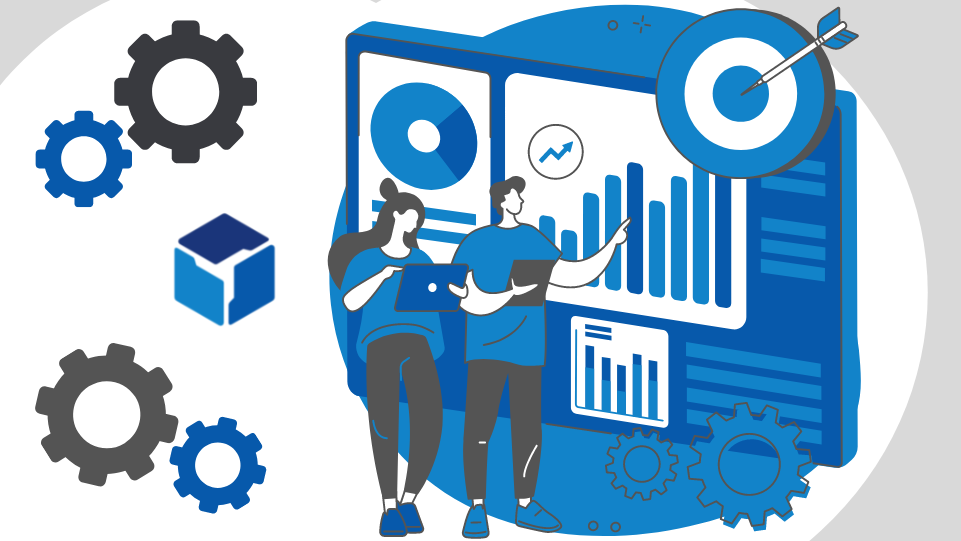If you own or perform facilities maintenance on a commercial building, you’ll need a commercial building maintenance checklist to help guide your repairs. The last thing you want is for your building to require extensive repairs that could’ve been avoided with preventative maintenance. Take a look at our comprehensive checklist for commercial buildings so you can ensure it stays in tip-top shape.
What Is Preventative Maintenance?
Preventative maintenance is performed proactively on equipment to lessen the likelihood of failure (and reduce any unexpected downtime) and prolong its life. Using preventative maintenance, you can lower your overall maintenance costs, improve the scheduling of preventative maintenance activities, and be more prepared for maintenance work with the right supplies, parts, and labor.
It’s no secret that equipment and assets in a commercial building are susceptible to breaking down and wearing out over time. That’s why you must get proactive to reduce the likelihood of unexpected failures happening.
The Ultimate Checklist
Lighting
Failure to maintain lighting fixtures can destroy energy savings and cause poor light quality. To keep your lighting in good condition, make sure to:
- Check the exterior lights to ensure there are no torn cables and make sure all screws and hardware is in place and working properly
- Replace gaskets for a watertight seal
- Inspect lighting fixtures regularly
- Clean lens surfaces and dust lamps to improve lighting
- Make sure every lamp has the same color temperature
- Safely store used bulbs (because lighting elements could contain lead or mercury) until a certified vendor can remove them
- Re-aim adjustable lighting as needed
- Replace burned-out lamps
- Check any luminaries that have control gear, transformers, or accessories regularly (such as color filters, glare baffles, and spread lenses)
Safety
Conducting safety inspections regularly is essential for any commercial building to ensure the welfare of your propertyand its occupants. Make sure to replace old, faulty wiring and install smoke alarms according to local building codes. Checking these things monthly and replacing batteries every year is recommended. Inspect the fire alarms to check for fire hazards or anything that may be blocking the fire exits to the building. You also want to be sure there’s a fire extinguisher on every floor of the building and they’re regularly checked and recharged according to the manufacturer’s recommendation.
HVAC
To preserve indoor air quality and preserve energy efficiency, you must make sure your HVAC system is up to date. That means inspecting the system at least twice a year with seasonal start-up and run inspections and recharging P-traps or U-bend water traps for condensate drain pans. It’s also important to look for latch or screw updates, missing screw replacements, and gasket repairs that need to be made. You should also:
- Clean and replace air filters at regular intervals
- Inspect couplings and check for leaks
- Lubricate pumps once a year and inspect for unusual noises
- Ensure the superheat temperature falls between 10 to 20 degrees indirect pressure systems
- Buy coil cleaner (if you can reach the condenser coil) and wipe it off
- Inspect the settings for energy efficiency, especially the compressor, refrigerant charge, and thermal expansion valve periodically
- Disassemble screens and access panels in cooling towers for inspection, including the sump and spray nozzles, support structure, fill valve, fan blades, tower fill, gearbox, drive coupling, and motor bearings
- Clean the starter and cabinet and inspect the wiring
- Check motor starter contacts for wear and efficient operation
Electrical
To keep your electrical equipment in working condition, electricians recommend checking outlets, breaker boxes, wires, batteries, switches, and other electrical components at least once per year to ensure there’s no cracking or corrosion. Replace any batteries that need replacing and keep circuit boxes, grilles, and electrical storage free of dust, dirt, and debris. Performing all of this maintenance regularly can extend the life of your equipment.
Plumbing
Maintaining your plumbing systems requires following these guidelines:
- Check and replace refrigerant and oils
- Inspect couplings to detect any leaks
- Check fixtures in public restrooms and look for potential leaks
- Check boilers and water heaters
- Check contacts for wear and regularly run system tests
- Look at sump and sewage pumps at least once annually
- Lubricate water booster and circulation pump systems
Fire Safety
You should also perform regular preventative maintenance on the building’s fire safety system so that you can ensure it’ll work when it needs to. Check sprinkler heads, the central control panel, and pull stations. You’ll also want to check your standpipes and the pump supplying them. Make sure your pressure relief valves are properly calibrated. For instance, are you only getting 10 gallons of water when you should be getting 200 gallons per minute?
Bathrooms and Kitchens
Keeping the bathrooms and kitchens in great shape means getting inspections to discover damaged tiles, malfunctioning soap and paper towel dispensers, cracked or missing grout, and faulty hardware. If the company occupying the building handles food, get a general contractor to touch up the grout and caulk and inspect them every year before your inspection.
Interior
For optimum fire safety, doors and windows should be checked every year. Keeping the building as clean as possible can help ensure minimal wear and tear. Consider investing in a cleaning service that can do the floors, windows, bathrooms, and more.
Schedule carpet cleanings once every four to six months to remove allergens and to keep the place looking as professional-looking as possible. Clean the walls regularly and repaint them as necessary to enhance the building’s overall appearance. Hire a pest control expert to inspect the place routinely to prevent infestations before they occur or address them as soon as they do.
Exterior
Ensure the exterior of the property, including the roof, stays in good condition throughout the year. You can do that by performing a little preventative maintenance on it, just like you would the rest of the home. Exterior maintenance includes:
- Inspecting the roof at least twice per year (and after any serious storms)
- Clean the roof drains of debris
- Clean surfaces in parking garages twice per year (coating replacement every 10 years)
- Clean out the gutters
- Examine the sheet metal, copings, and previously repaired sections when walking the perimeter
- Check for wrinkles or tearing on roof-to-wall connections and flashings
- Conduct a moisture survey to find leaks
Considering Asset Management and Equipment Tracking Software
Preventative maintenance on commercial buildings is crucial if you want to avoid expensive repairs before they occur and keep your building in great shape throughout the years. Use this checklist to ensure you’re always one step ahead of things so you can always address any issues immediately. Or take things a step further and get asset management and equipment tracking software through BlueFolder that can help you schedule preventative maintenance and track service histories, warranties, and serial numbers.






